For the DH Sample Book site go here
The Map of Early Modern London
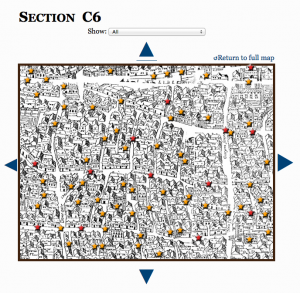 “The Map of Early Modern London is comprised of four distinct, interoperable projects: a digital Map and gazetteer based on the 1560s Agas woodcut map of London; an Encyclopedia of London people, places, topics, and terms; a Library of marked-up texts rich in London toponyms; and a versioned edition of John Stow’s Survey of London.
“The Map of Early Modern London is comprised of four distinct, interoperable projects: a digital Map and gazetteer based on the 1560s Agas woodcut map of London; an Encyclopedia of London people, places, topics, and terms; a Library of marked-up texts rich in London toponyms; and a versioned edition of John Stow’s Survey of London.
These four projects draw data from MoEML’s five databases: a Placeography of locations (e.g., streets, sites, playhouses, taverns, churches, wards, and topographical features); a Personography of early modern Londoners, both historical and literary; an Orgography of organizations (e.g., livery companies and other corporations); a Bibliography of primary and secondary sources; and a Glossary of terms relevant to early modern London. All of the files in our databases use a common TEI tagset that enables us to work with primary and secondary texts simultaneously.”
Jenstad, Janelle. n.d. “About MoEML.” The Map of Early Modern London. Ed. Janelle Jenstad. Victoria: University of Victoria. Accessed August 24, 2014. http://mapoflondon.uvic.ca/about.htm.
Livingston’s 1871 Field Diary: A Multispectral Edition
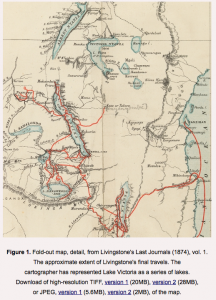 “The publication of Livingstone’s 1871 Field Diary: A Multispectral Critical Edition reveals for the first time the original record of a remarkable and traumatic period in the life of David Livingstone, the celebrated British abolitionist, missionary, and explorer of Africa. The date of publication coincides almost exactly with the date Livingstone completed this diary in Central Africa 140 years ago. The original, previously unpublished text of the diary has remained inaccessible until now, due to the fragility of the paper and the near-illegible script. The David Livingstone Spectral Imaging Project has restored the full text of the diary by using cutting-edge spectral imaging and processing technology, and now makes the diary available through this electronic edition.”
“The publication of Livingstone’s 1871 Field Diary: A Multispectral Critical Edition reveals for the first time the original record of a remarkable and traumatic period in the life of David Livingstone, the celebrated British abolitionist, missionary, and explorer of Africa. The date of publication coincides almost exactly with the date Livingstone completed this diary in Central Africa 140 years ago. The original, previously unpublished text of the diary has remained inaccessible until now, due to the fragility of the paper and the near-illegible script. The David Livingstone Spectral Imaging Project has restored the full text of the diary by using cutting-edge spectral imaging and processing technology, and now makes the diary available through this electronic edition.”
http://livingstone.library.ucla.edu/
Orbis
“Spanning one-ninth of the earth’s circumference across three continents, the Roman Empire ruled a quarter of humanity through complex networks of political power, military domination and economic exchange. These extensive connections were sustained by premodern transportation and communication technologies that relied on energy generated by human and animal bodies, winds, and currents.
Conventional maps that represent this world as it appears from space signally fail to capture the severe environmental constraints that governed the flows of people, goods and information. Cost, rather than distance, is the principal determinant of connectivity.”
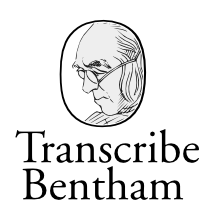 ‘Many hands make light work. Many hands together make merry work‘, wrote the philosopher and reformer, Jeremy Bentham (1748 – 1832) in 1793. In this spirit, we cordially welcome you to Transcribe Bentham, a double award-winning collaborative transcription initiative, which is digitising and making available digital images of Bentham’s unpublished manuscripts through a platform known as the ‘Transcription Desk‘. There, you can access the material and—just as importantly—transcribe the material, to help the work of UCL’s Bentham Project, and further improve access to, and searchability of, this enormously important collection of historical and philosophical material.”
‘Many hands make light work. Many hands together make merry work‘, wrote the philosopher and reformer, Jeremy Bentham (1748 – 1832) in 1793. In this spirit, we cordially welcome you to Transcribe Bentham, a double award-winning collaborative transcription initiative, which is digitising and making available digital images of Bentham’s unpublished manuscripts through a platform known as the ‘Transcription Desk‘. There, you can access the material and—just as importantly—transcribe the material, to help the work of UCL’s Bentham Project, and further improve access to, and searchability of, this enormously important collection of historical and philosophical material.”
http://blogs.ucl.ac.uk/transcribe-bentham/
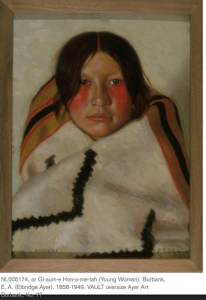 American Indian Histories and Cultures is a deep and wide ranging selection of visual and textual resources related to Native American culture and history. Taken from the Newberry Library’s Edward E Ayer Collection, one of the world’s most comprehensive collections of American Indian history, the resource provides documents, images, context, and insight into American Indian culture and history, the European settlement of the Americas, and the interactions between the two groups. Some highlights included in this collection are the Black Horse Ledger Drawings, American Indian Newspapers, Speeches and petitions written by American Indians, and thousands of photographs. As an added feature, this resource is fully cross-searchable with The American West collection, a resource from Adam Matthew on Western Americana sourced from the Newberry Library’s prestigious Everett D. Graff Collection.
American Indian Histories and Cultures is a deep and wide ranging selection of visual and textual resources related to Native American culture and history. Taken from the Newberry Library’s Edward E Ayer Collection, one of the world’s most comprehensive collections of American Indian history, the resource provides documents, images, context, and insight into American Indian culture and history, the European settlement of the Americas, and the interactions between the two groups. Some highlights included in this collection are the Black Horse Ledger Drawings, American Indian Newspapers, Speeches and petitions written by American Indians, and thousands of photographs. As an added feature, this resource is fully cross-searchable with The American West collection, a resource from Adam Matthew on Western Americana sourced from the Newberry Library’s prestigious Everett D. Graff Collection.
http://www.aihc.amdigital.co.uk/
Lincoln at 200-Newberry Library, Chicago
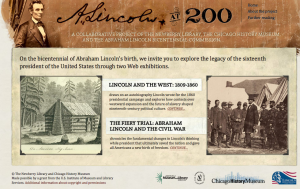
About the Project
The city in which Abraham Lincoln was nominated for president in 1860 has not forgotten him.
Lincoln at 200 is a collaborative project of the Abraham Lincoln Bicentennial Commission, the Chicago History Museum, and the Newberry Library. The Institute for Museum and Library Services has generously provided funding for this Web exhibition as part of a series of initiatives to commemorate the Lincoln bicentennial. All three institutions collaborated in planning public programs in Chicago for the bicentennial year. Eileen Mackevich, executive director of the Abraham Lincoln Bicentennial Commission, initiated the discussions that led to this collaboration. We are grateful to her and to Jennifer Rosenfeld, deputy executive director of the Bicentennial Commission, for their energetic and collegial participation in this initiative.
Mapping the Republic of Letters
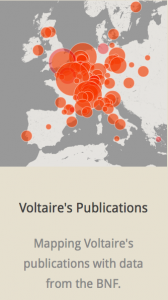
Before email, faculty meetings, international colloquia, and professional associations, the world of scholarship relied on its own networks: networks of correspondence that stretched across countries and continents; the social networks created by scientific academies; and the physical networks brought about by travel. These networks were the lifelines of learning, from the age of Erasmus to the age of Franklin. They facilitated the dissemination and the criticism,of ideas, the spread of political news, as well as the circulation of people and objects.
But what did these networks actually look like? Were they as extensive as we are led to believe? How did they evolve over time? Mapping the Republic of Letters, in collaboration with international partners, seeks to answer these and other questions through the development of sophisticated, interactive visualization tools. It also aims to create a repository for metadata on early-modern scholarship, and guidelines for future data capture.
Stanford University
http://republicofletters.stanford.edu/
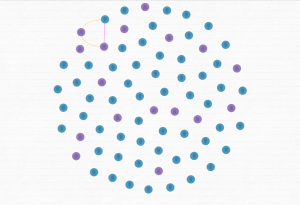
Kindred Britain is a network of nearly 30,000 individuals — many of them iconic figures in British culture — connected through family relationships of blood, marriage, or affiliation. It is a vision of the nation’s history as a giant family affair.
Stanford University
Kindred Britain YouTube Channel
Elijah Meeks on Kindred Britain as a Sign of the Times
Hypercities (best viewed in Chrome)
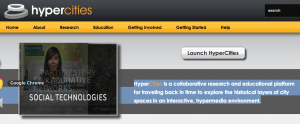 Collaborative research and teaching platform for developing “deep maps” of selected cities
Collaborative research and teaching platform for developing “deep maps” of selected cities
Electronic Enlightenment (database available through Bertrand Library)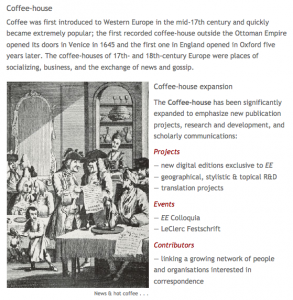
Electronic Enlightenment — letters & lives online
. . . reconnecting the first global social network!
Electronic Enlightenment is the most wide-ranging online collection of edited correspondence of the early modern period, linking people across Europe, the Americas and Asia from the early 17th to the mid-19th century — reconstructing one of the world’s great historical “conversations”.
Database of Indigenous Peoples in North America
Database access to original materials pertaining to Native Americans and their history. Available through the Bucknell University Bertrand Library Database collection.
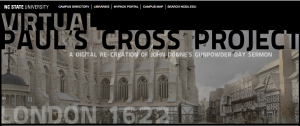 “The Virtual Paul’s Cross Project enables us to experience the delivery of John Donne’s sermon for Gunpowder Day, November 5, 1622 as an event that unfolds over time on a particular occasion in Paul’s Churchyard, the specific physical location for which it was composed.”
“The Virtual Paul’s Cross Project enables us to experience the delivery of John Donne’s sermon for Gunpowder Day, November 5, 1622 as an event that unfolds over time on a particular occasion in Paul’s Churchyard, the specific physical location for which it was composed.”
The Great Parchment Book of The Honourable The Irish Society is a major survey, compiled in 1639 by a Commission instituted under the Great Seal by Charles I, of all those estates in Derry managed by the City of London through the Irish Society and the City of London livery companies. It represents a hugely important source for the City of London’s role in the Protestant colonisation and administration of Ulster. Damaged as the result of a fire at Guildhall in 1786, it has been unavailable to researchers for over 200 years. However, the manuscript has remained part of the City of London’s collections held at London Metropolitan Archives (LMA reference CLA/049/EM/02/018.) As part of the 2013 commemorations in Derry of the 400th anniversary of the building of the city walls, it was decided to attempt to make the Great Parchment Book available as a central point of an exhibition in Derry’s Guildhall.
Physical description and issues
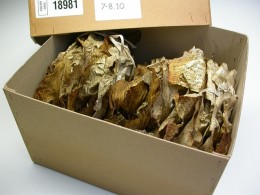 The manuscript consisted of 165 separate parchment pages, all of which suffered damage in the fire in 1786. The uneven shrinkage and distortion caused by fire had rendered much of the text illegible. The surviving 165 folios (including fragments and unidentified folios) were stored in 16 boxes, in an order drawing together as far as possible the passages dealing with the particular lands of different livery companies and of the Society (see Book History.)
The manuscript consisted of 165 separate parchment pages, all of which suffered damage in the fire in 1786. The uneven shrinkage and distortion caused by fire had rendered much of the text illegible. The surviving 165 folios (including fragments and unidentified folios) were stored in 16 boxes, in an order drawing together as far as possible the passages dealing with the particular lands of different livery companies and of the Society (see Book History.)
http://www.greatparchmentbook.org/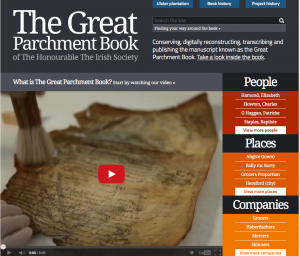
Why should we be interested in old ship’s logs? Well this site reveals how the detailed 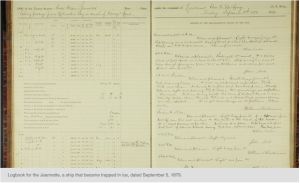 records kept about weather in ships’ logs can help give us information about climate change. Listen to this radio segment on the site, interviewing the transcribers of the logs.
records kept about weather in ships’ logs can help give us information about climate change. Listen to this radio segment on the site, interviewing the transcribers of the logs.
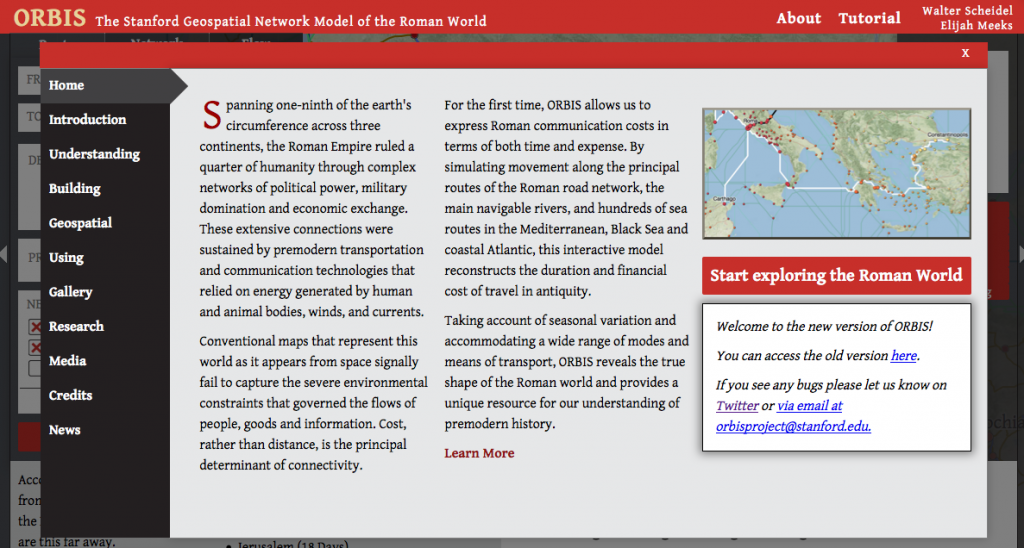
Leave a Reply